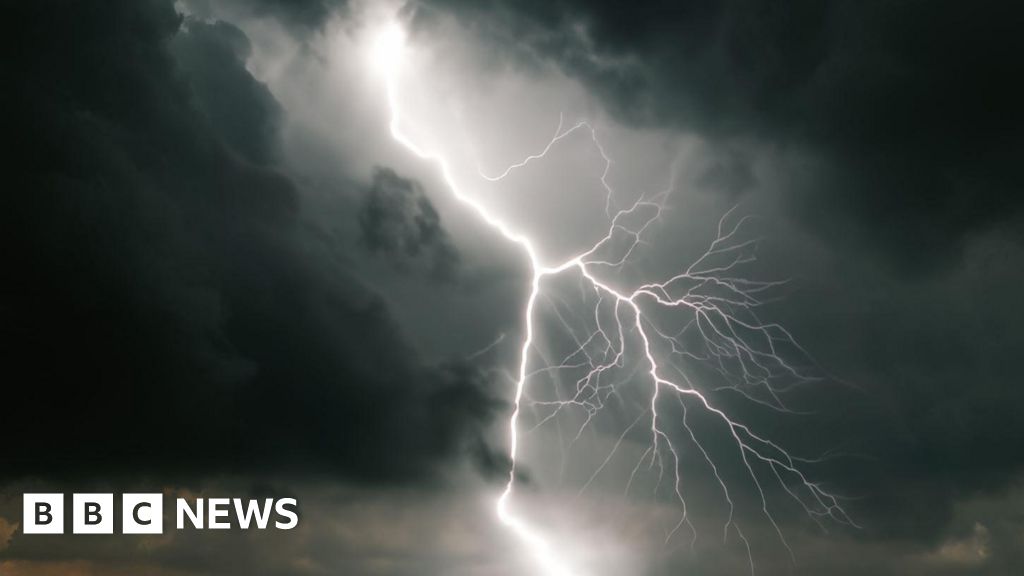Thunderstorms are among the most dramatic and dangerous weather phenomena on Earth. With their booming thunder, blinding lightning, intense rainfall, and powerful winds, they often leave behind a trail of awe and sometimes devastation. Recent thunderstorm news has highlighted a surge in extreme weather activity, making it crucial for individuals to understand how these storms form, the dangers they pose, and how to stay informed and safe during thunderstorm News events.
The Rise in Thunderstorm Activity: What’s Happening?
Across the globe, meteorologists have noted an uptick in the frequency and severity of thunderstorm News. Several recent reports have brought attention to intense thunderstorm News systems impacting various regions, from rural communities to major cities. This rise is not just a coincidence but is increasingly linked to broader climate trends and atmospheric changes.
Key contributing factors include:
-
Rising global temperatures leading to more moisture in the atmosphere
-
Shifts in jet stream patterns that influence storm tracks
-
Urban heat islands intensifying localized storm activity
-
Warmer oceans feeding energy into storm systems
As these factors align, the result is often stronger storms with greater potential to cause flooding, property damage, and power outages.
Understanding Thunderstorms: How Do They Form?
A thunderstorm News develops when warm, moist air rises into cooler layers of the atmosphere. As the air ascends, it cools and condenses, forming cumulonimbus clouds. These clouds can tower up to 60,000 feet and become electrically charged, leading to lightning and thunder.
There are three main stages in a thunderstorm’s lifecycle:
-
Cumulus Stage: Updrafts carry moist air upward, forming clouds.
-
Mature Stage: Precipitation begins, and both updrafts and downdrafts are active. This is when lightning, thunder, and heavy rain occur.
-
Dissipating Stage: Downdrafts dominate, and the storm begins to weaken.
Not all thunderstorms are severe, but some can escalate quickly and bring damaging hail, high winds, flash flooding, and tornadoes.
Recent Thunderstorm News Highlights
In the past few months, thunderstorm-related events have dominated headlines. From delayed flights to power grid failures, their impact is far-reaching. Here are a few notable examples:
-
In the Midwest, a supercell thunderstorm system spawned multiple tornadoes, disrupting transportation and damaging infrastructure
-
Eastern coastal states experienced rare winter thunderstorm News that brought unexpected lightning and thunder to snowy regions
-
In South Asia, pre-monsoon thunderstorm News brought intense rain and strong winds, leading to landslides and temporary displacement in rural areas
These events reflect the need for more robust forecasting, public awareness, and early-warning systems.
Dangers Associated with Thunderstorms
Thunderstorm News pose a variety of hazards, many of which can escalate without much warning. The main risks include:
-
Lightning Strikes: A single bolt can carry up to a billion volts of electricity, causing fires, injuries, or fatalities
-
Flash Flooding: Heavy rain in a short span can overwhelm drainage systems and flood roads and homes
-
Hail: Ice pellets ranging in size from peas to softballs can destroy crops, vehicles, and rooftops
-
High Winds: Straight-line winds and downbursts can mimic tornado damage, toppling trees and power lines
-
Tornadoes: Thunderstorm News, especially supercells, can produce tornadoes with catastrophic impacts
How to Stay Safe During a Thunderstorm
Preparedness can save lives during severe weather events. Here are essential thunderstorm safety tips:
-
Monitor Weather Updates: Use trusted weather apps or radios to stay informed
-
Seek Shelter Immediately: If you hear thunder, lightning is nearby; move indoors and avoid open fields and tall trees
-
Avoid Electrical Appliances: Stay off corded phones and unplug electronics to prevent surge damage
-
Stay Away from Water: Don’t bathe, shower, or do dishes during a lightning storm
-
Secure Outdoor Items: High winds can turn furniture and tools into dangerous projectiles
Thunderstorm Preparedness Checklist
Use this checklist to ensure you’re ready before, during, and after a thunderstorm:
-
Before
-
Review emergency plans and evacuation routes
-
Stock up on flashlights, batteries, bottled water, and non-perishable food
-
Charge all devices and power banks
-
-
During
-
Stay indoors and away from windows
-
Avoid contact with plumbing and electrical outlets
-
Listen to local authorities for emergency alerts
-
-
After
-
Wait until the storm has passed to go outside
-
Check for damage and downed power lines
-
Report outages or hazards to the proper authorities
-
The Role of Technology in Thunderstorm Forecasting
Advanced radar systems, satellite imaging, and artificial intelligence are revolutionizing thunderstorm forecasting. Weather agencies now have better tools to predict storm development, intensity, and track. This allows for earlier warnings and more time for people to act.
Smartphone apps and wearable devices also play a key role by delivering real-time alerts and emergency instructions. Communities benefit from sirens, public address systems, and coordinated emergency response efforts.
FAQ: Common Questions About Thunderstorms
What causes lightning during a thunderstorm?
Lightning is caused by the buildup and discharge of electrical energy within storm clouds or between clouds and the ground
Can you be struck by lightning indoors?
Although rare, lightning can strike homes and travel through plumbing or wiring, so it’s best to avoid baths and electronics during a storm
How far away is lightning when you hear thunder?
If you hear thunder, lightning is within 10 miles. To estimate the distance, count the seconds between a flash and the thunder, then divide by 5 to get miles
What is a supercell thunderstorm?
A supercell is a highly organized thunderstorm with a rotating updraft, often capable of producing severe weather like large hail and tornadoes
Is it safe to drive during a thunderstorm?
It’s best to avoid driving during intense storms due to poor visibility and the risk of hydroplaning. If you must drive, pull over safely and wait it out
Do thunderstorms happen in winter?
Yes, they can occur in winter, especially when warm moist air collides with cold fronts, creating “thundersnow”
Conclusion
Thunderstorms are powerful reminders of nature’s force and unpredictability. With recent thunderstorm news highlighting more frequent and intense events worldwide, staying informed and prepared is more important than ever. By understanding how storms form, recognizing their dangers, and knowing how to respond, you can protect yourself and your loved ones. As weather patterns continue to evolve, so should our awareness and readiness





